Adventure Travel · Attractions · Ecuador · Going Out · Leisure Travel · Regions · South America · Speciality Travel
The ultimate birding tour in Ecuador: 10 unbelievable species at Yasuni Biosphere Reserve
The Amazon is full of unbelievable birds, but Ecuador, represented in this case by Yasuni Biosphere Reserve, is the perfect place to find some of the most unbelievable bird species for travellers who are in search of unique adventures and birdwatching. Come to discover 10 representative species found in the Ecuadorian Amazon!
 In the year of the bird, imagine yourself inmmersed in a wildlife documentary at the heart of the rainforest. You can play the role of a TV host showing the beauties of the Amazon and the wonderful flying fairies fluttering arround Añangu Lagoon:
1. Salvin’s curassow
Scientific name: Mitu salvini or Crax salvini
Description: Native from the Cracidae family, it can be found in Colombia, Peru and Ecuador. Humid terra firme in tropical or subtropical lowland forests is their natural habitat.
Curious facts: *It is a turkey-size, prized game bird. *Despite it has been hunted, it is a least-concern animal in the Conservation status. *They feed on seeds, cotyledons, flowers, leaves, and fallen fruit. *They are also called “culiblanco” in Spanish -which means “white ass”- for the color of the tip of their tail.
In the year of the bird, imagine yourself inmmersed in a wildlife documentary at the heart of the rainforest. You can play the role of a TV host showing the beauties of the Amazon and the wonderful flying fairies fluttering arround Añangu Lagoon:
1. Salvin’s curassow
Scientific name: Mitu salvini or Crax salvini
Description: Native from the Cracidae family, it can be found in Colombia, Peru and Ecuador. Humid terra firme in tropical or subtropical lowland forests is their natural habitat.
Curious facts: *It is a turkey-size, prized game bird. *Despite it has been hunted, it is a least-concern animal in the Conservation status. *They feed on seeds, cotyledons, flowers, leaves, and fallen fruit. *They are also called “culiblanco” in Spanish -which means “white ass”- for the color of the tip of their tail.
 2. Grey-winged trumpeter
Scientific name: Psophia crepitans
Description: it is a member of the Psophiidae family. Guiana Shield and the Amazon are the only places where you can see it. They nest in hollow trees and pick their food (insects and fruit) from the ground. *Its colors are mostly black and grey. Its rump and back are grey.
Curious facts: *They are similar to Guineafowls and prefer running than flying. *They have a low humming, but their call is as loud as their name, so they can be kept as pets because their sound is an alert, and they hunt snakes. *Do not hunt them, please! They are Near Threatened in the Conservation Status.
2. Grey-winged trumpeter
Scientific name: Psophia crepitans
Description: it is a member of the Psophiidae family. Guiana Shield and the Amazon are the only places where you can see it. They nest in hollow trees and pick their food (insects and fruit) from the ground. *Its colors are mostly black and grey. Its rump and back are grey.
Curious facts: *They are similar to Guineafowls and prefer running than flying. *They have a low humming, but their call is as loud as their name, so they can be kept as pets because their sound is an alert, and they hunt snakes. *Do not hunt them, please! They are Near Threatened in the Conservation Status.
 3. Snail kite
Scientific name: Rostrhamus sociabilis
Description: It belongs to the Accipitridae, which also has the hawks, the Old World vultures, and the eagles as members. South America, the Caribbean, Central America and Central-Southern Florida are their breeding spots.
Curious facts: *Snail kites have red eyes, a curved beak, white rump with an elongated tail, and red or orange legs. *They are molluscivores –they eat apple snails. They also eat rodents, crabs, crayfish and turtles. They nest in bushes or on the ground. Kites are a Least Concern species in the Conservation Status, but in Florida they are listed as endangered.
3. Snail kite
Scientific name: Rostrhamus sociabilis
Description: It belongs to the Accipitridae, which also has the hawks, the Old World vultures, and the eagles as members. South America, the Caribbean, Central America and Central-Southern Florida are their breeding spots.
Curious facts: *Snail kites have red eyes, a curved beak, white rump with an elongated tail, and red or orange legs. *They are molluscivores –they eat apple snails. They also eat rodents, crabs, crayfish and turtles. They nest in bushes or on the ground. Kites are a Least Concern species in the Conservation Status, but in Florida they are listed as endangered.
 4. Scarlet macaw
Scientific name: Ara Macao
Description: Scarlet macaws belong to the Psittacidae, a large family group of Neotropical parrots with 17 species at all. Their home ranges from Southern Mexico to Bolivia, including Honduras, Venezuela, Colombia, Brazil and Peru.
Curious facts: *Scarlet macaws are the national bird in Honduras. *These are one of the most beautiful and gorgeous parrots. *They prefer to live in the Rainforest, and eat seeds, fruits, nuts, larvae and insects. *They also eat clay, no one knows why! In fact, there is a place where you can watch them doing this particular action: the Parrot Clay Licks in Napo! *In the Conservation Status, Scarlet Macaws are at the Least Concern level.
4. Scarlet macaw
Scientific name: Ara Macao
Description: Scarlet macaws belong to the Psittacidae, a large family group of Neotropical parrots with 17 species at all. Their home ranges from Southern Mexico to Bolivia, including Honduras, Venezuela, Colombia, Brazil and Peru.
Curious facts: *Scarlet macaws are the national bird in Honduras. *These are one of the most beautiful and gorgeous parrots. *They prefer to live in the Rainforest, and eat seeds, fruits, nuts, larvae and insects. *They also eat clay, no one knows why! In fact, there is a place where you can watch them doing this particular action: the Parrot Clay Licks in Napo! *In the Conservation Status, Scarlet Macaws are at the Least Concern level.
 5. Hoatzin
Scientific name: Opisthocomus hoazin
Description: Hoatzins are found in the family of the Opisthocomidae. They are tropical birds who live in swamps, mangroves, and riparian forests. They can be seen in the whole Amazon, especially in the Orinoco Delta (Venezuela). Hoatzins are vegetarian birds. They feed on fruits, flowers, leaves and plants. They are social birds since they are usually found in groups.
Curious facts: *This is one of the strangest creatures in the Amazon: it has more than one stomach and looks like a chicken. The fact of its multiple stomachs has lead the hoatzin to be called “the flying cow”. Some of its names are “Stinkbird” and “Canje pheasant”. *Its face is completely blue and unfeathered. It has maroon eyes, and its head has a spiky crest. *Hoatzins are the national birds of Guyana. *They are not endangered as they are in the Least Concern position in the Conservation Status.
5. Hoatzin
Scientific name: Opisthocomus hoazin
Description: Hoatzins are found in the family of the Opisthocomidae. They are tropical birds who live in swamps, mangroves, and riparian forests. They can be seen in the whole Amazon, especially in the Orinoco Delta (Venezuela). Hoatzins are vegetarian birds. They feed on fruits, flowers, leaves and plants. They are social birds since they are usually found in groups.
Curious facts: *This is one of the strangest creatures in the Amazon: it has more than one stomach and looks like a chicken. The fact of its multiple stomachs has lead the hoatzin to be called “the flying cow”. Some of its names are “Stinkbird” and “Canje pheasant”. *Its face is completely blue and unfeathered. It has maroon eyes, and its head has a spiky crest. *Hoatzins are the national birds of Guyana. *They are not endangered as they are in the Least Concern position in the Conservation Status.
 6. Crested owl
Scientific name: Lophostrix cristata
Description: It comes from the Strigidae family, and can be found in Sounth Mexico, Central America and the North of South America, including almost all the Amazon Basin. *They mainly eat insects and small vertebrates.
Curious facts: *These are nocturnal birds. *They are called “crested” because they present two white “eyebrows” that extend themselves to form a crest above their head. Crested owls are Least Concern in the Conservation Status.
6. Crested owl
Scientific name: Lophostrix cristata
Description: It comes from the Strigidae family, and can be found in Sounth Mexico, Central America and the North of South America, including almost all the Amazon Basin. *They mainly eat insects and small vertebrates.
Curious facts: *These are nocturnal birds. *They are called “crested” because they present two white “eyebrows” that extend themselves to form a crest above their head. Crested owls are Least Concern in the Conservation Status.
 7. White-throated toucan
Scientific name: Ramphastos tucanus
Description: It belongs to the Ramphastidae family. They have been found throughout the whole Amazon. They prefer tropical humid forests, but they have also been seen in woodlands.
Curious facts: *Toucans eat large arthropods, mixed fruit, small vertebrates like lizards, and the nestlings and eggs of other smaller birds. *The sounds they make are the Amazon humid lowland forest’s most known call; it can reach long distances. *They are also called “Red Bill” Toucans because this is another common characteristic in them. * White-Throated Toucans are classified as Vulnerable in the Conservation Status.
7. White-throated toucan
Scientific name: Ramphastos tucanus
Description: It belongs to the Ramphastidae family. They have been found throughout the whole Amazon. They prefer tropical humid forests, but they have also been seen in woodlands.
Curious facts: *Toucans eat large arthropods, mixed fruit, small vertebrates like lizards, and the nestlings and eggs of other smaller birds. *The sounds they make are the Amazon humid lowland forest’s most known call; it can reach long distances. *They are also called “Red Bill” Toucans because this is another common characteristic in them. * White-Throated Toucans are classified as Vulnerable in the Conservation Status.
 8. Spangled cotinga
Scientific name: Cotinga cayana
Description: they come from the family of the Cotingidae. They can be found in the Amazon Rainforest canopy. They are frugivorous birds, but they have been also caught eating insects.
Curious facts: *They have been hunted by many people for their beautiful, colorful brilliant feathers, and also to feed indigenous communities. *Some of these Cotinga species’ feathers are also used in fishing flies and lures. *Birdwatchers from all around the world come to have a closer look at their beauty! Least Concern is their classification in the Conservation Status.
8. Spangled cotinga
Scientific name: Cotinga cayana
Description: they come from the family of the Cotingidae. They can be found in the Amazon Rainforest canopy. They are frugivorous birds, but they have been also caught eating insects.
Curious facts: *They have been hunted by many people for their beautiful, colorful brilliant feathers, and also to feed indigenous communities. *Some of these Cotinga species’ feathers are also used in fishing flies and lures. *Birdwatchers from all around the world come to have a closer look at their beauty! Least Concern is their classification in the Conservation Status.
 9. Blue-backed manakin
Scientific name: Chiroxiphia pareola
Description: Pipridae is their family. The Amazon Basin –except from the northwest- is full of them, also Tobago and the Guyanas. They tend to live in dry and moist forests, and avoid the rainforest. These manakins eat fruit and insects.
Curious facts: *When breeding, males have an amazing breeding display that includes a cooperative lekking behavior in which they twirl and jump to attract their female mate. *They are classified as Least Concern in the Conservation Status.
9. Blue-backed manakin
Scientific name: Chiroxiphia pareola
Description: Pipridae is their family. The Amazon Basin –except from the northwest- is full of them, also Tobago and the Guyanas. They tend to live in dry and moist forests, and avoid the rainforest. These manakins eat fruit and insects.
Curious facts: *When breeding, males have an amazing breeding display that includes a cooperative lekking behavior in which they twirl and jump to attract their female mate. *They are classified as Least Concern in the Conservation Status.
 10. Paradise tanager
Scientific name: Tangara chilensis
Description: Thraupidae is their family. They live in humid tropical and subtropical forests in the Amazon Basin’s western and northern sides, and also in the Guyanas. These tanagers eat fruits and insects.
Curious facts: *These are multicolored neotropical birds that forage in the canopy of lowland forests. *There are four subspecies: each one differs on the color of their rumps. *Although their scientific name has that “chilensis”, it is not found in Chile. *They are classified as Least Concern in the Conservation Status.
10. Paradise tanager
Scientific name: Tangara chilensis
Description: Thraupidae is their family. They live in humid tropical and subtropical forests in the Amazon Basin’s western and northern sides, and also in the Guyanas. These tanagers eat fruits and insects.
Curious facts: *These are multicolored neotropical birds that forage in the canopy of lowland forests. *There are four subspecies: each one differs on the color of their rumps. *Although their scientific name has that “chilensis”, it is not found in Chile. *They are classified as Least Concern in the Conservation Status.
 See them for yourself in a birding tour in Añangu kichwa community, inside Yasuni National Park.
Diego Escobar is Marketing Director at Napo Wildlife Center. Napo Wildlife Center is an eco-lodge offering unforgettable experiences in the Amazon rainforest of Ecuador, inside Yasuni Biosphere Reserve, which is managed by the Añangu kichwa aboriginal community.
If you would like to be a guest blogger on A Luxury Travel Blog in order to raise your profile, please contact us.
See them for yourself in a birding tour in Añangu kichwa community, inside Yasuni National Park.
Diego Escobar is Marketing Director at Napo Wildlife Center. Napo Wildlife Center is an eco-lodge offering unforgettable experiences in the Amazon rainforest of Ecuador, inside Yasuni Biosphere Reserve, which is managed by the Añangu kichwa aboriginal community.
If you would like to be a guest blogger on A Luxury Travel Blog in order to raise your profile, please contact us.
 In the year of the bird, imagine yourself inmmersed in a wildlife documentary at the heart of the rainforest. You can play the role of a TV host showing the beauties of the Amazon and the wonderful flying fairies fluttering arround Añangu Lagoon:
1. Salvin’s curassow
Scientific name: Mitu salvini or Crax salvini
Description: Native from the Cracidae family, it can be found in Colombia, Peru and Ecuador. Humid terra firme in tropical or subtropical lowland forests is their natural habitat.
Curious facts: *It is a turkey-size, prized game bird. *Despite it has been hunted, it is a least-concern animal in the Conservation status. *They feed on seeds, cotyledons, flowers, leaves, and fallen fruit. *They are also called “culiblanco” in Spanish -which means “white ass”- for the color of the tip of their tail.
In the year of the bird, imagine yourself inmmersed in a wildlife documentary at the heart of the rainforest. You can play the role of a TV host showing the beauties of the Amazon and the wonderful flying fairies fluttering arround Añangu Lagoon:
1. Salvin’s curassow
Scientific name: Mitu salvini or Crax salvini
Description: Native from the Cracidae family, it can be found in Colombia, Peru and Ecuador. Humid terra firme in tropical or subtropical lowland forests is their natural habitat.
Curious facts: *It is a turkey-size, prized game bird. *Despite it has been hunted, it is a least-concern animal in the Conservation status. *They feed on seeds, cotyledons, flowers, leaves, and fallen fruit. *They are also called “culiblanco” in Spanish -which means “white ass”- for the color of the tip of their tail.
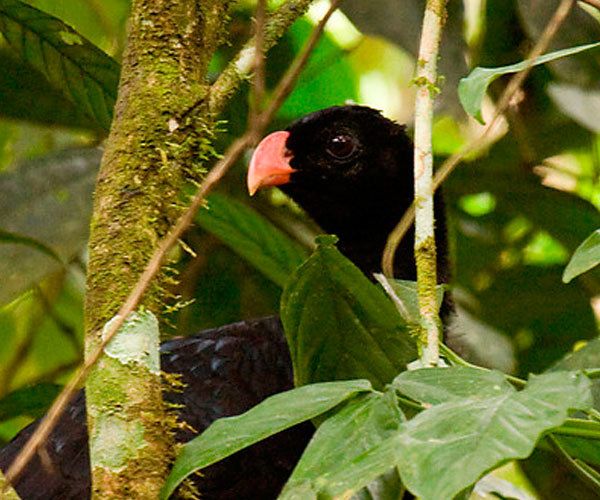 2. Grey-winged trumpeter
Scientific name: Psophia crepitans
Description: it is a member of the Psophiidae family. Guiana Shield and the Amazon are the only places where you can see it. They nest in hollow trees and pick their food (insects and fruit) from the ground. *Its colors are mostly black and grey. Its rump and back are grey.
Curious facts: *They are similar to Guineafowls and prefer running than flying. *They have a low humming, but their call is as loud as their name, so they can be kept as pets because their sound is an alert, and they hunt snakes. *Do not hunt them, please! They are Near Threatened in the Conservation Status.
2. Grey-winged trumpeter
Scientific name: Psophia crepitans
Description: it is a member of the Psophiidae family. Guiana Shield and the Amazon are the only places where you can see it. They nest in hollow trees and pick their food (insects and fruit) from the ground. *Its colors are mostly black and grey. Its rump and back are grey.
Curious facts: *They are similar to Guineafowls and prefer running than flying. *They have a low humming, but their call is as loud as their name, so they can be kept as pets because their sound is an alert, and they hunt snakes. *Do not hunt them, please! They are Near Threatened in the Conservation Status.
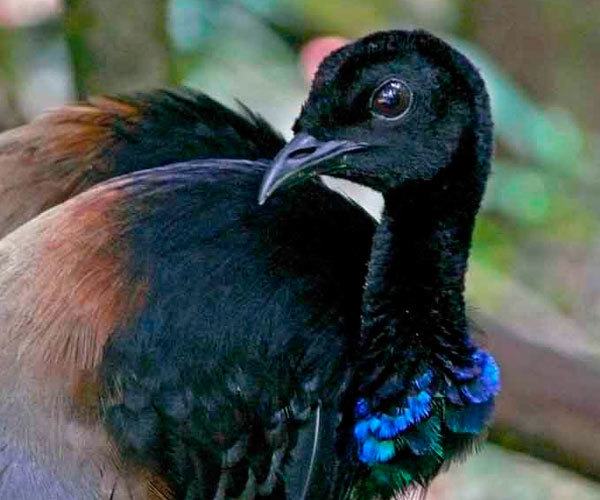 3. Snail kite
Scientific name: Rostrhamus sociabilis
Description: It belongs to the Accipitridae, which also has the hawks, the Old World vultures, and the eagles as members. South America, the Caribbean, Central America and Central-Southern Florida are their breeding spots.
Curious facts: *Snail kites have red eyes, a curved beak, white rump with an elongated tail, and red or orange legs. *They are molluscivores –they eat apple snails. They also eat rodents, crabs, crayfish and turtles. They nest in bushes or on the ground. Kites are a Least Concern species in the Conservation Status, but in Florida they are listed as endangered.
3. Snail kite
Scientific name: Rostrhamus sociabilis
Description: It belongs to the Accipitridae, which also has the hawks, the Old World vultures, and the eagles as members. South America, the Caribbean, Central America and Central-Southern Florida are their breeding spots.
Curious facts: *Snail kites have red eyes, a curved beak, white rump with an elongated tail, and red or orange legs. *They are molluscivores –they eat apple snails. They also eat rodents, crabs, crayfish and turtles. They nest in bushes or on the ground. Kites are a Least Concern species in the Conservation Status, but in Florida they are listed as endangered.
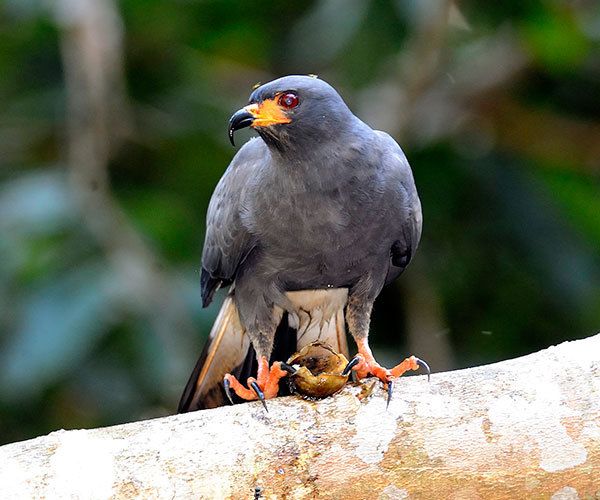 4. Scarlet macaw
Scientific name: Ara Macao
Description: Scarlet macaws belong to the Psittacidae, a large family group of Neotropical parrots with 17 species at all. Their home ranges from Southern Mexico to Bolivia, including Honduras, Venezuela, Colombia, Brazil and Peru.
Curious facts: *Scarlet macaws are the national bird in Honduras. *These are one of the most beautiful and gorgeous parrots. *They prefer to live in the Rainforest, and eat seeds, fruits, nuts, larvae and insects. *They also eat clay, no one knows why! In fact, there is a place where you can watch them doing this particular action: the Parrot Clay Licks in Napo! *In the Conservation Status, Scarlet Macaws are at the Least Concern level.
4. Scarlet macaw
Scientific name: Ara Macao
Description: Scarlet macaws belong to the Psittacidae, a large family group of Neotropical parrots with 17 species at all. Their home ranges from Southern Mexico to Bolivia, including Honduras, Venezuela, Colombia, Brazil and Peru.
Curious facts: *Scarlet macaws are the national bird in Honduras. *These are one of the most beautiful and gorgeous parrots. *They prefer to live in the Rainforest, and eat seeds, fruits, nuts, larvae and insects. *They also eat clay, no one knows why! In fact, there is a place where you can watch them doing this particular action: the Parrot Clay Licks in Napo! *In the Conservation Status, Scarlet Macaws are at the Least Concern level.
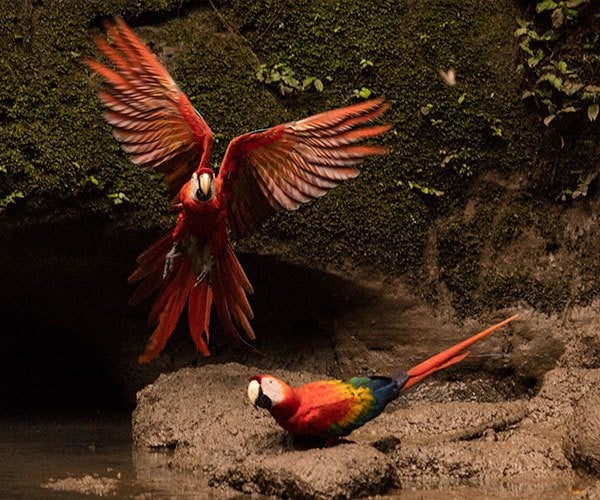 5. Hoatzin
Scientific name: Opisthocomus hoazin
Description: Hoatzins are found in the family of the Opisthocomidae. They are tropical birds who live in swamps, mangroves, and riparian forests. They can be seen in the whole Amazon, especially in the Orinoco Delta (Venezuela). Hoatzins are vegetarian birds. They feed on fruits, flowers, leaves and plants. They are social birds since they are usually found in groups.
Curious facts: *This is one of the strangest creatures in the Amazon: it has more than one stomach and looks like a chicken. The fact of its multiple stomachs has lead the hoatzin to be called “the flying cow”. Some of its names are “Stinkbird” and “Canje pheasant”. *Its face is completely blue and unfeathered. It has maroon eyes, and its head has a spiky crest. *Hoatzins are the national birds of Guyana. *They are not endangered as they are in the Least Concern position in the Conservation Status.
5. Hoatzin
Scientific name: Opisthocomus hoazin
Description: Hoatzins are found in the family of the Opisthocomidae. They are tropical birds who live in swamps, mangroves, and riparian forests. They can be seen in the whole Amazon, especially in the Orinoco Delta (Venezuela). Hoatzins are vegetarian birds. They feed on fruits, flowers, leaves and plants. They are social birds since they are usually found in groups.
Curious facts: *This is one of the strangest creatures in the Amazon: it has more than one stomach and looks like a chicken. The fact of its multiple stomachs has lead the hoatzin to be called “the flying cow”. Some of its names are “Stinkbird” and “Canje pheasant”. *Its face is completely blue and unfeathered. It has maroon eyes, and its head has a spiky crest. *Hoatzins are the national birds of Guyana. *They are not endangered as they are in the Least Concern position in the Conservation Status.
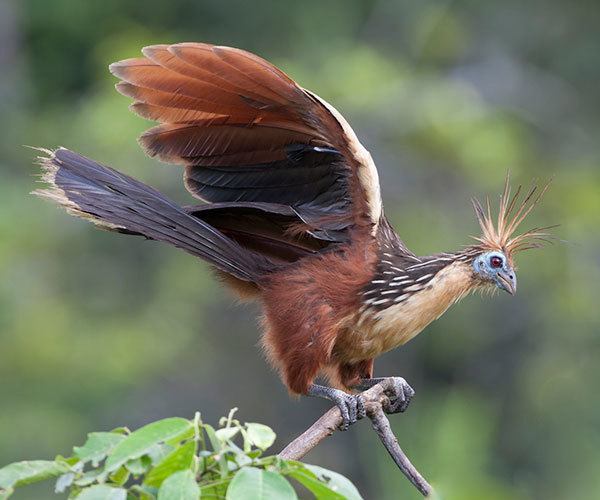 6. Crested owl
Scientific name: Lophostrix cristata
Description: It comes from the Strigidae family, and can be found in Sounth Mexico, Central America and the North of South America, including almost all the Amazon Basin. *They mainly eat insects and small vertebrates.
Curious facts: *These are nocturnal birds. *They are called “crested” because they present two white “eyebrows” that extend themselves to form a crest above their head. Crested owls are Least Concern in the Conservation Status.
6. Crested owl
Scientific name: Lophostrix cristata
Description: It comes from the Strigidae family, and can be found in Sounth Mexico, Central America and the North of South America, including almost all the Amazon Basin. *They mainly eat insects and small vertebrates.
Curious facts: *These are nocturnal birds. *They are called “crested” because they present two white “eyebrows” that extend themselves to form a crest above their head. Crested owls are Least Concern in the Conservation Status.
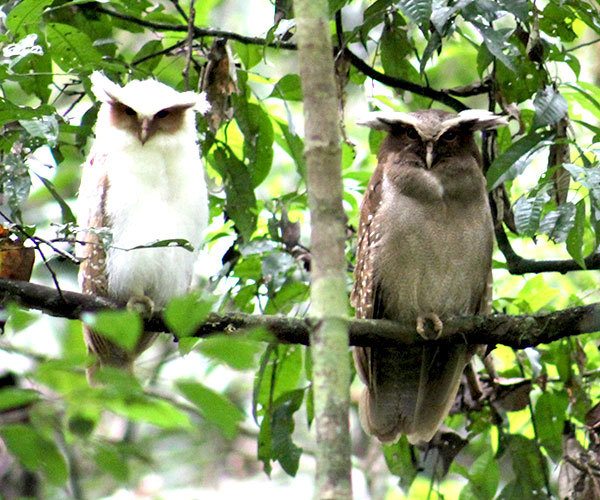 7. White-throated toucan
Scientific name: Ramphastos tucanus
Description: It belongs to the Ramphastidae family. They have been found throughout the whole Amazon. They prefer tropical humid forests, but they have also been seen in woodlands.
Curious facts: *Toucans eat large arthropods, mixed fruit, small vertebrates like lizards, and the nestlings and eggs of other smaller birds. *The sounds they make are the Amazon humid lowland forest’s most known call; it can reach long distances. *They are also called “Red Bill” Toucans because this is another common characteristic in them. * White-Throated Toucans are classified as Vulnerable in the Conservation Status.
7. White-throated toucan
Scientific name: Ramphastos tucanus
Description: It belongs to the Ramphastidae family. They have been found throughout the whole Amazon. They prefer tropical humid forests, but they have also been seen in woodlands.
Curious facts: *Toucans eat large arthropods, mixed fruit, small vertebrates like lizards, and the nestlings and eggs of other smaller birds. *The sounds they make are the Amazon humid lowland forest’s most known call; it can reach long distances. *They are also called “Red Bill” Toucans because this is another common characteristic in them. * White-Throated Toucans are classified as Vulnerable in the Conservation Status.
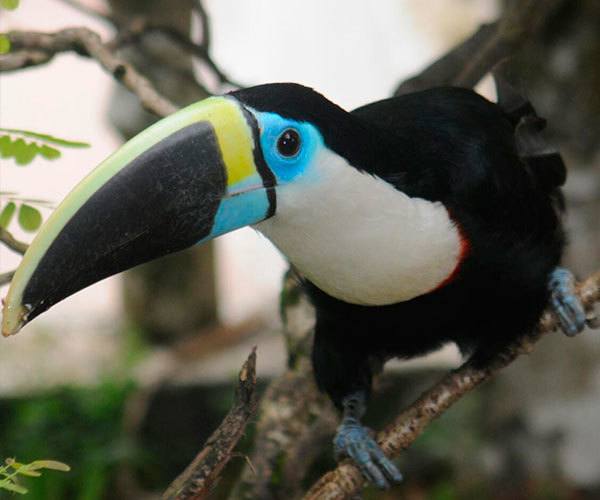 8. Spangled cotinga
Scientific name: Cotinga cayana
Description: they come from the family of the Cotingidae. They can be found in the Amazon Rainforest canopy. They are frugivorous birds, but they have been also caught eating insects.
Curious facts: *They have been hunted by many people for their beautiful, colorful brilliant feathers, and also to feed indigenous communities. *Some of these Cotinga species’ feathers are also used in fishing flies and lures. *Birdwatchers from all around the world come to have a closer look at their beauty! Least Concern is their classification in the Conservation Status.
8. Spangled cotinga
Scientific name: Cotinga cayana
Description: they come from the family of the Cotingidae. They can be found in the Amazon Rainforest canopy. They are frugivorous birds, but they have been also caught eating insects.
Curious facts: *They have been hunted by many people for their beautiful, colorful brilliant feathers, and also to feed indigenous communities. *Some of these Cotinga species’ feathers are also used in fishing flies and lures. *Birdwatchers from all around the world come to have a closer look at their beauty! Least Concern is their classification in the Conservation Status.
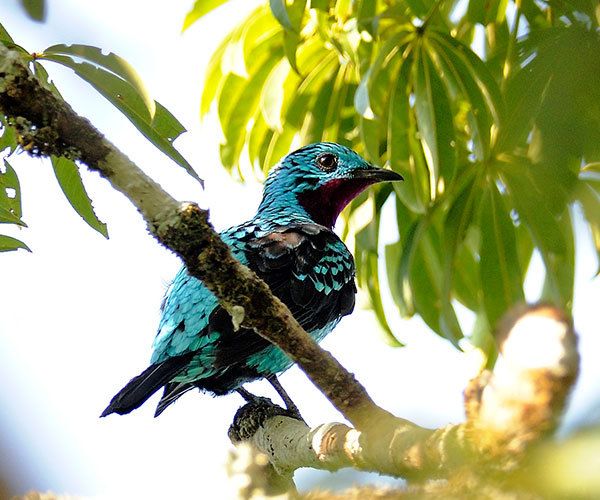 9. Blue-backed manakin
Scientific name: Chiroxiphia pareola
Description: Pipridae is their family. The Amazon Basin –except from the northwest- is full of them, also Tobago and the Guyanas. They tend to live in dry and moist forests, and avoid the rainforest. These manakins eat fruit and insects.
Curious facts: *When breeding, males have an amazing breeding display that includes a cooperative lekking behavior in which they twirl and jump to attract their female mate. *They are classified as Least Concern in the Conservation Status.
9. Blue-backed manakin
Scientific name: Chiroxiphia pareola
Description: Pipridae is their family. The Amazon Basin –except from the northwest- is full of them, also Tobago and the Guyanas. They tend to live in dry and moist forests, and avoid the rainforest. These manakins eat fruit and insects.
Curious facts: *When breeding, males have an amazing breeding display that includes a cooperative lekking behavior in which they twirl and jump to attract their female mate. *They are classified as Least Concern in the Conservation Status.
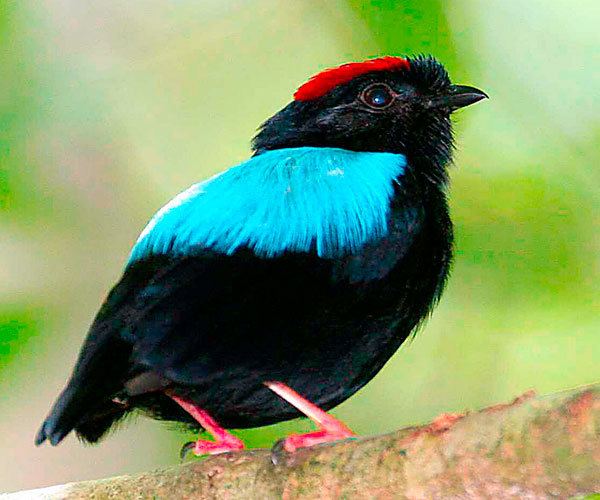 10. Paradise tanager
Scientific name: Tangara chilensis
Description: Thraupidae is their family. They live in humid tropical and subtropical forests in the Amazon Basin’s western and northern sides, and also in the Guyanas. These tanagers eat fruits and insects.
Curious facts: *These are multicolored neotropical birds that forage in the canopy of lowland forests. *There are four subspecies: each one differs on the color of their rumps. *Although their scientific name has that “chilensis”, it is not found in Chile. *They are classified as Least Concern in the Conservation Status.
10. Paradise tanager
Scientific name: Tangara chilensis
Description: Thraupidae is their family. They live in humid tropical and subtropical forests in the Amazon Basin’s western and northern sides, and also in the Guyanas. These tanagers eat fruits and insects.
Curious facts: *These are multicolored neotropical birds that forage in the canopy of lowland forests. *There are four subspecies: each one differs on the color of their rumps. *Although their scientific name has that “chilensis”, it is not found in Chile. *They are classified as Least Concern in the Conservation Status.
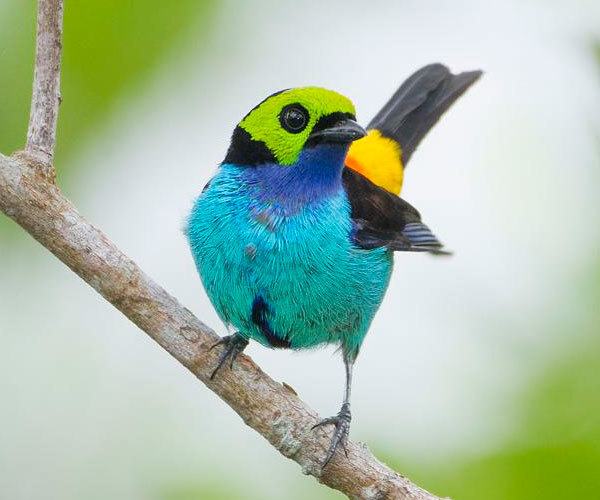 See them for yourself in a birding tour in Añangu kichwa community, inside Yasuni National Park.
Diego Escobar is Marketing Director at Napo Wildlife Center. Napo Wildlife Center is an eco-lodge offering unforgettable experiences in the Amazon rainforest of Ecuador, inside Yasuni Biosphere Reserve, which is managed by the Añangu kichwa aboriginal community.
If you would like to be a guest blogger on A Luxury Travel Blog in order to raise your profile, please contact us.
See them for yourself in a birding tour in Añangu kichwa community, inside Yasuni National Park.
Diego Escobar is Marketing Director at Napo Wildlife Center. Napo Wildlife Center is an eco-lodge offering unforgettable experiences in the Amazon rainforest of Ecuador, inside Yasuni Biosphere Reserve, which is managed by the Añangu kichwa aboriginal community.
If you would like to be a guest blogger on A Luxury Travel Blog in order to raise your profile, please contact us.Did you enjoy this article?
Receive similar content direct to your inbox.

